Shark is one of the most feared sea animals. Scientists classify more than 400 species of fish as sharks. Sharks live in oceans throughout the world. But they are most common in warm seas.
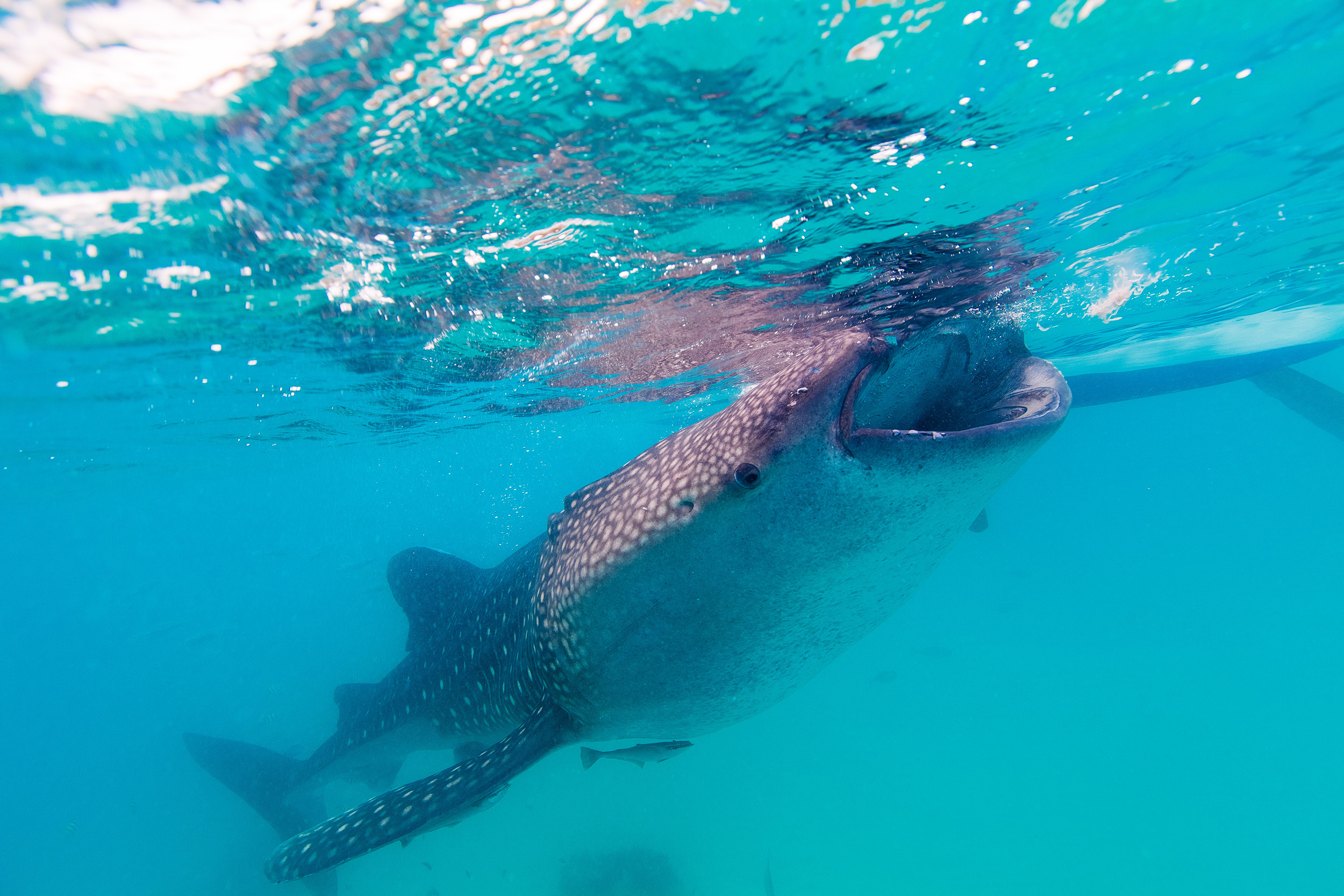
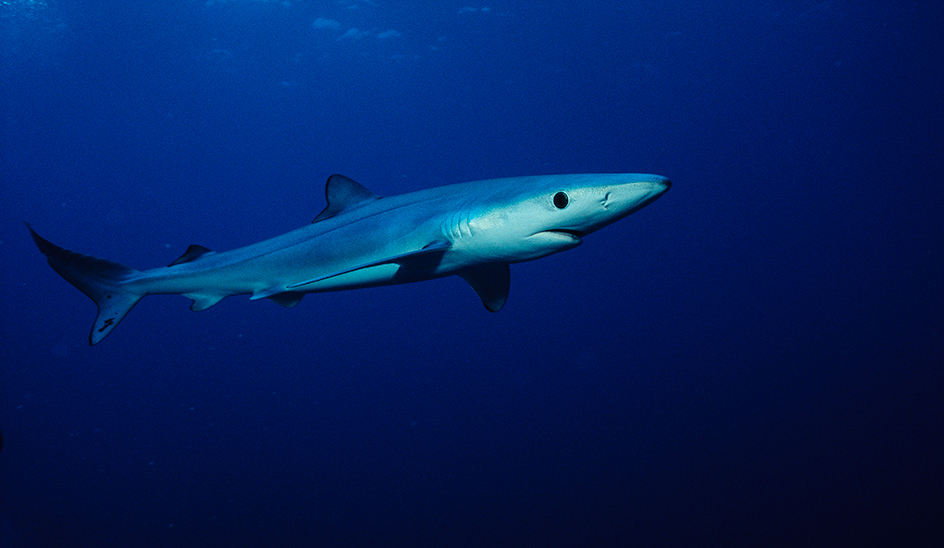
Sharks vary greatly in size and habits. Whale sharks are the largest kind of shark and the largest of all fishes. Adults may grow to over 46 feet (14 meters) long and weigh over 15 tons (14 metric tons), more than twice as heavy as an average African elephant. The smallest sharks measure about 6 inches (16 centimeters) long as full-grown adults and weigh about 1 ounce (28 grams).
Some kinds of sharks live in the depths of the ocean. Others are found near the surface. Some species of sharks live far out at sea. Others dwell in coastal waters. A few species enter rivers and lakes that have outlets to the sea. Scientists believe that one species, the Ganges River shark of India and Pakistan, lives only in rivers.
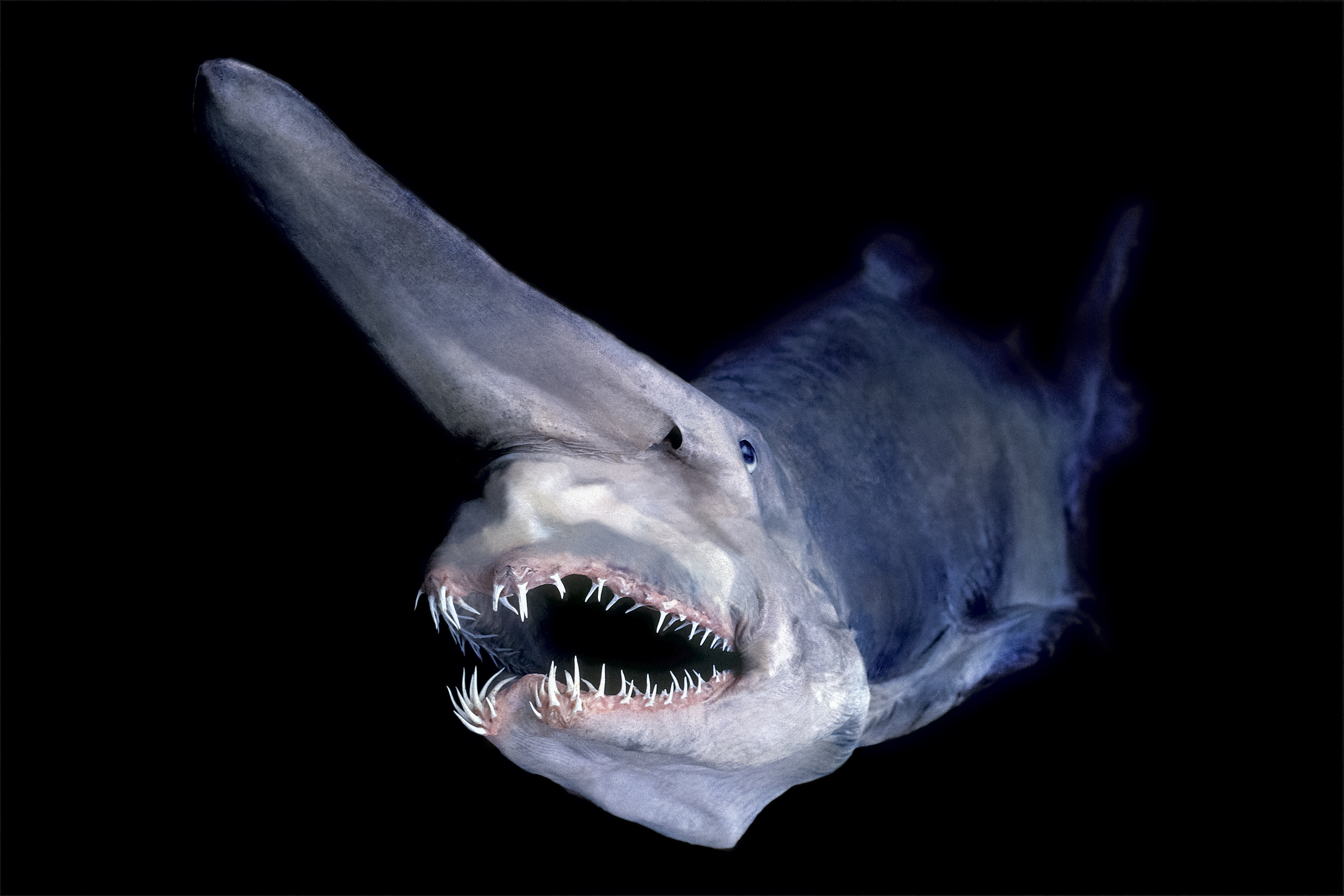
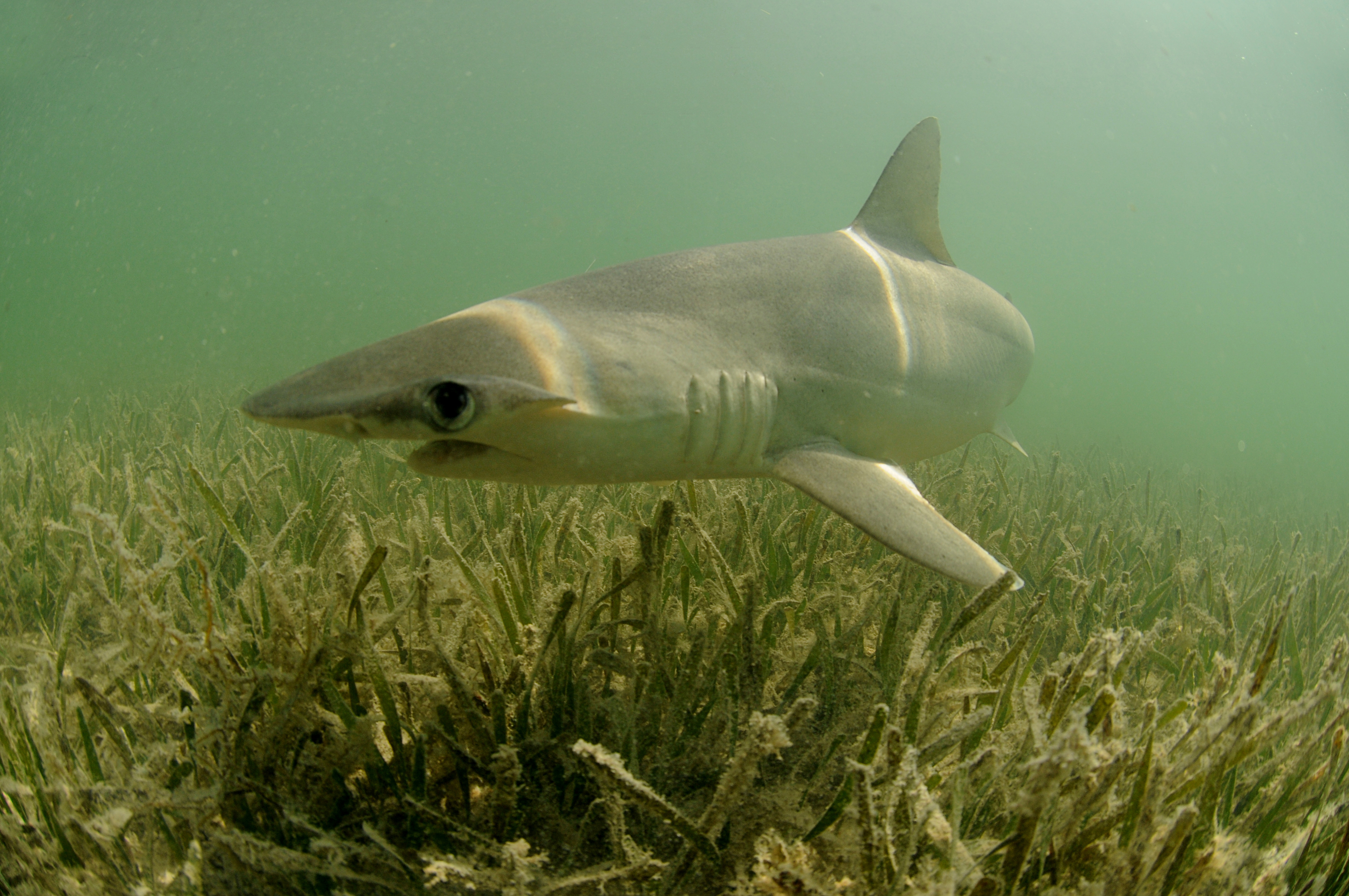
Almost all sharks are carnivores (meat-eaters). Most sharks eat live fish, including other sharks. In fact, the animal most likely to prey upon a shark is a larger shark. Most sharks eat their prey whole. They may also tear off large chunks of flesh. Some sharks crush their prey. Others scoop out small pieces of flesh from large fish. Sharks also feed on dead or dying animals. One shark, the bonnethead, is known to eat plants.
A few shark species have the reputation of occasionally biting human beings. But while millions of people swim in the ocean each year, fewer than 80 shark bites a year are reported worldwide.
The body of a shark
Sharks differ from most other kinds of fish in a number of ways. For example, sharks have a boneless skeleton. The skeleton is made of a tough, elastic substance called cartilage. Most species of sharks have a rounded body, shaped somewhat like a torpedo. This streamlined shape helps sharks to swim. Angel sharks have a flat body similar to that of skates and rays. Angel sharks hide on the ocean bottom and ambush their prey as it swims by.

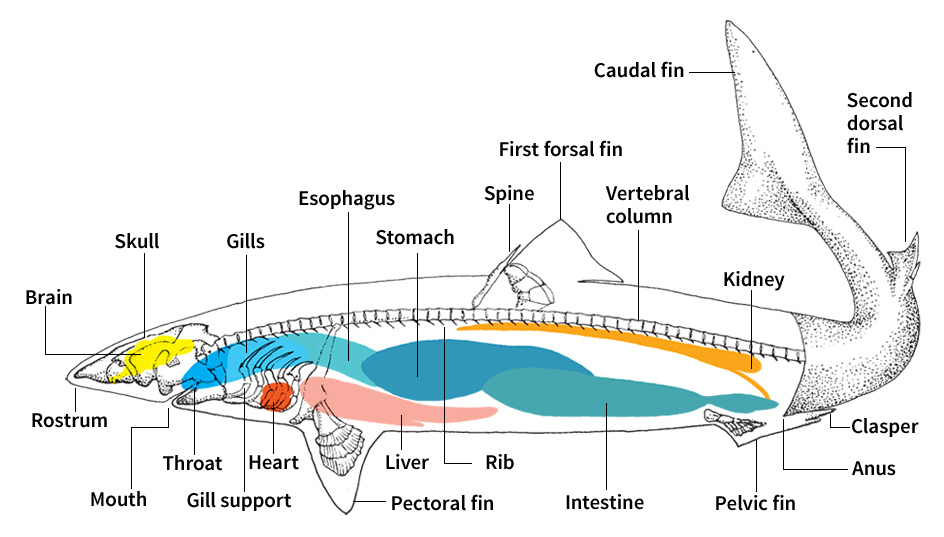
Sharks have fewer young at a time than most fish do. Some species of sharks can give birth to hundreds of pups (babies) in a litter. Most sharks, however, have far fewer. The parents do not take care of the young. The mother may even eat the pups.
Shark eggs, unlike those of most fish, are fertilized inside the female’s body. The male shark has two organs called claspers. During mating, the male inserts a clasper into the female and releases sperm into her. Among most species of sharks, the eggs develop and hatch inside the female. The pups are born alive. But at least 40 shark species lay eggs outside their bodies.
In rare instances, female sharks may give birth without mating with a male. Such reproduction without mating is called parthenogenesis. Parthenogenesis also occurs in a number of insect, bird, and reptile species.
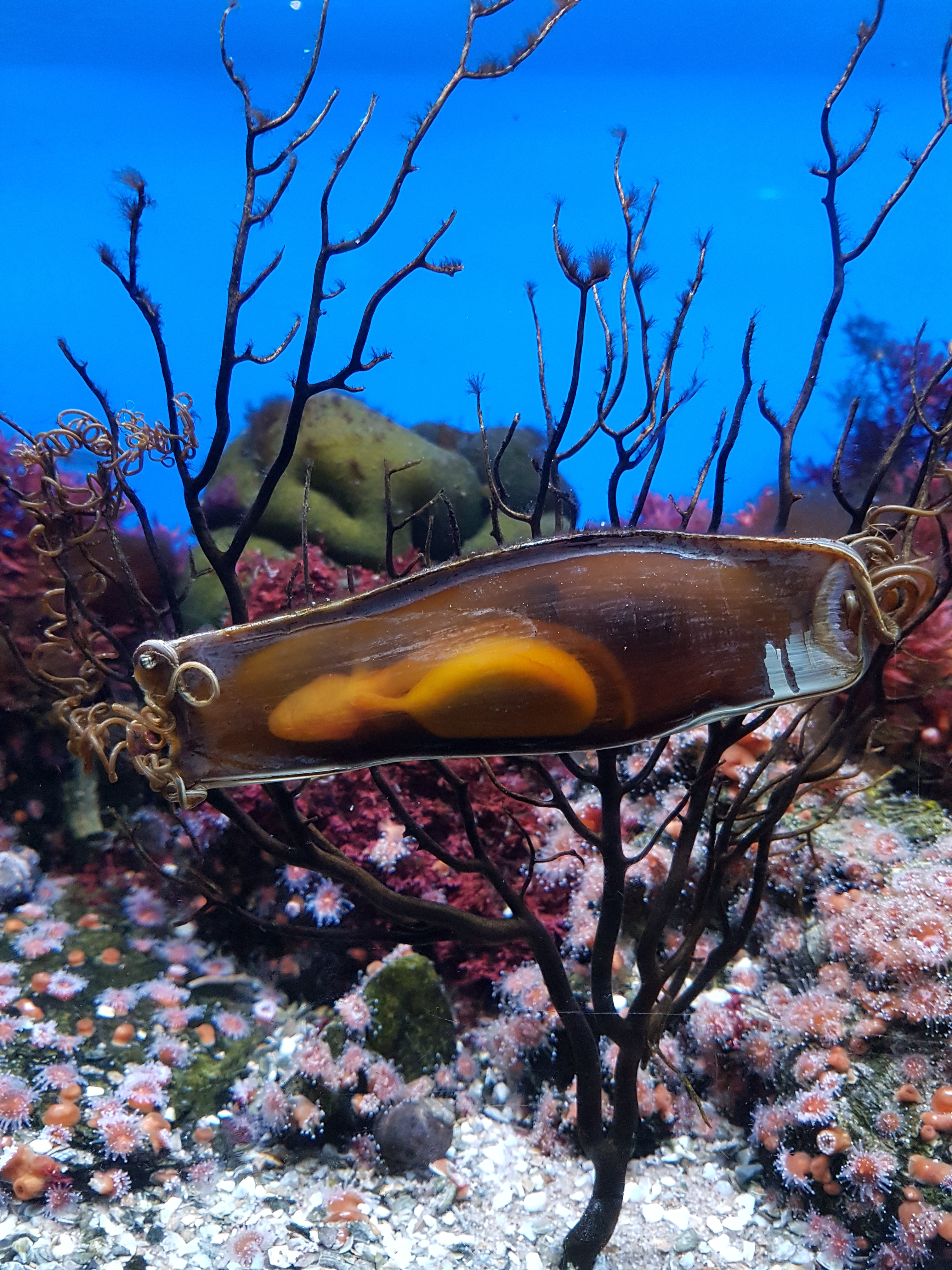
Tail and fins.
Sharks can travel with great bursts of speed when excited. The fastest-swimming sharks have a stiff crescent-shaped tail that provides power for swimming. In most sharks, the upper part of the tail is longer than the lower part. Stiff pectoral fins (side fins) help generate lift and steer the body.
Most fish have a swim bladder. The swim bladder is a gas-filled organ that helps them remain at a certain depth without sinking. Sharks lack this organ. Instead, they have a large liver filled with oil, which is less dense than water. As a result, it helps the shark keep from sinking. Even so, all sharks must swim to stay afloat.
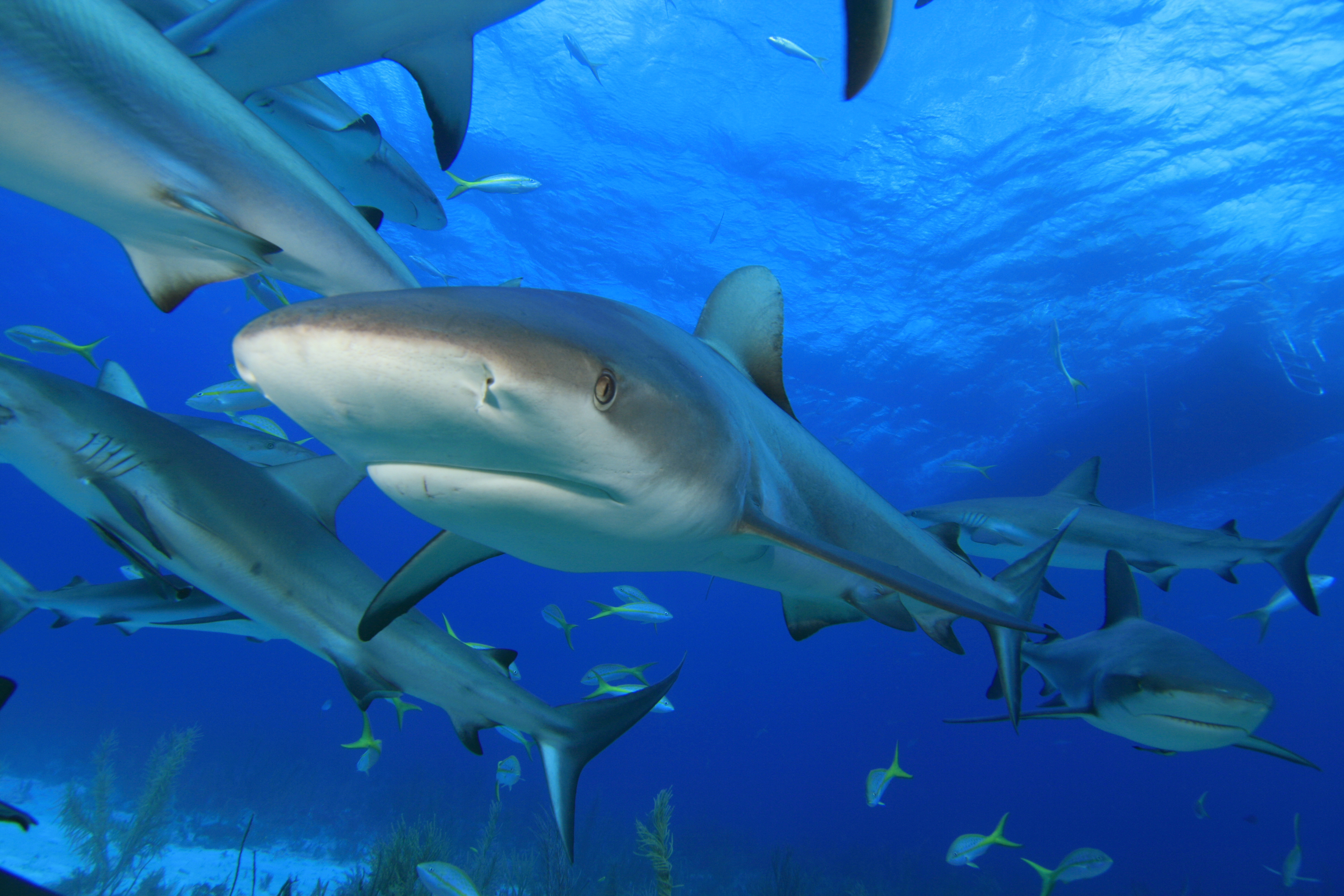
Teeth and scales.
A shark’s mouth is on the underside of the head among most species, and both the upper and lower jaw can jut forward during biting. The exceptions are the angel, megamouth, whale, and wobbegong sharks. The mouth of these sharks is at the front of the head.
Because sharks’ skeletons and jaws are made of cartilage, they lose teeth constantly, so they have numerous rows of teeth. Most sharks lose their front row of teeth every month. New teeth emerge as often as every week in some species. Some sharks have grinding teeth that are similar to molars. Others have serrated teeth that cut food like a steak knife. Still others have pointed teeth. Some people believe that sharks must turn over on their back to bite, but this is not true.
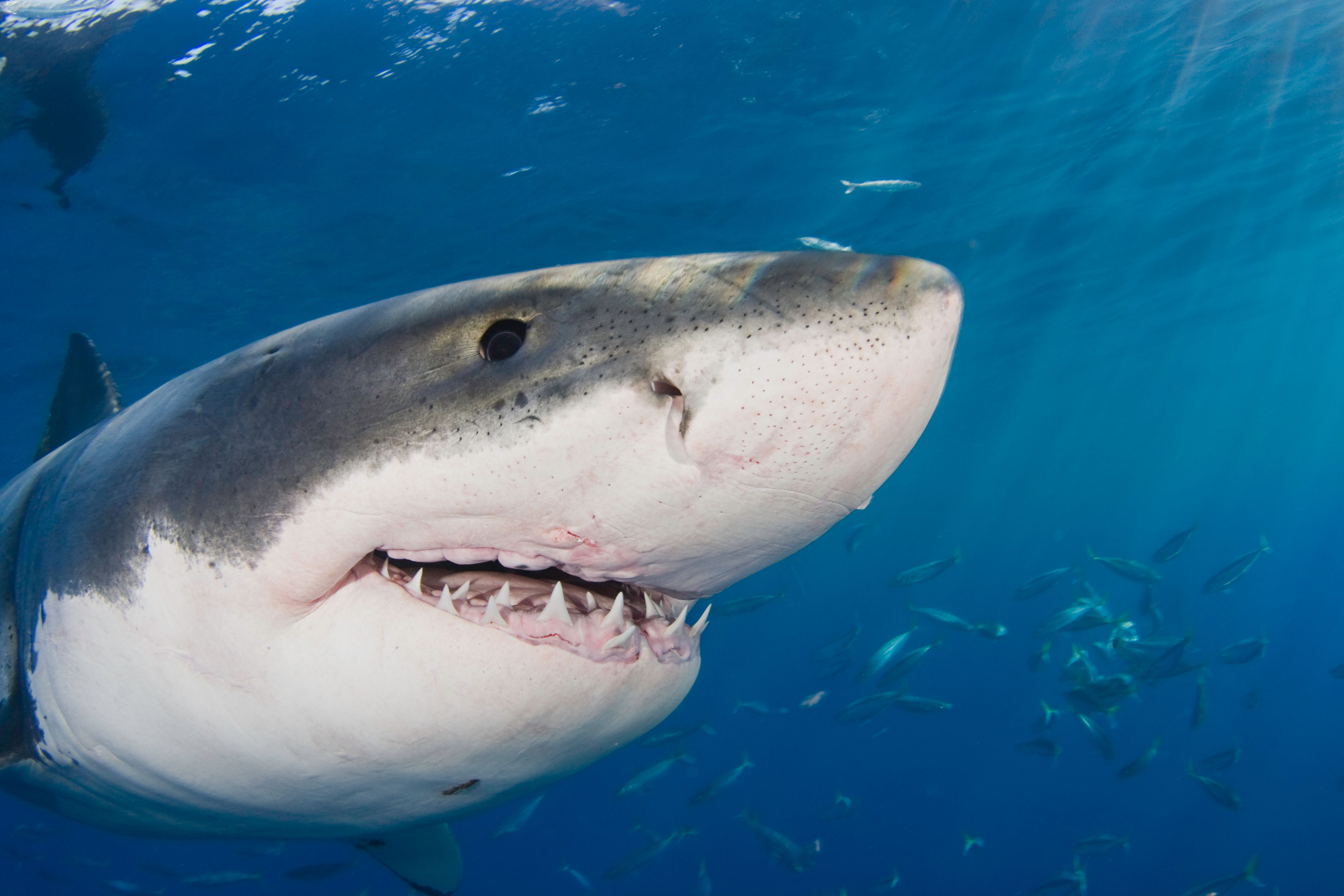
Small, toothlike scales cover a shark’s body. These placoid scales make the skin of a shark rough. Dried sharkskin, called shagreen, was once used as sandpaper.
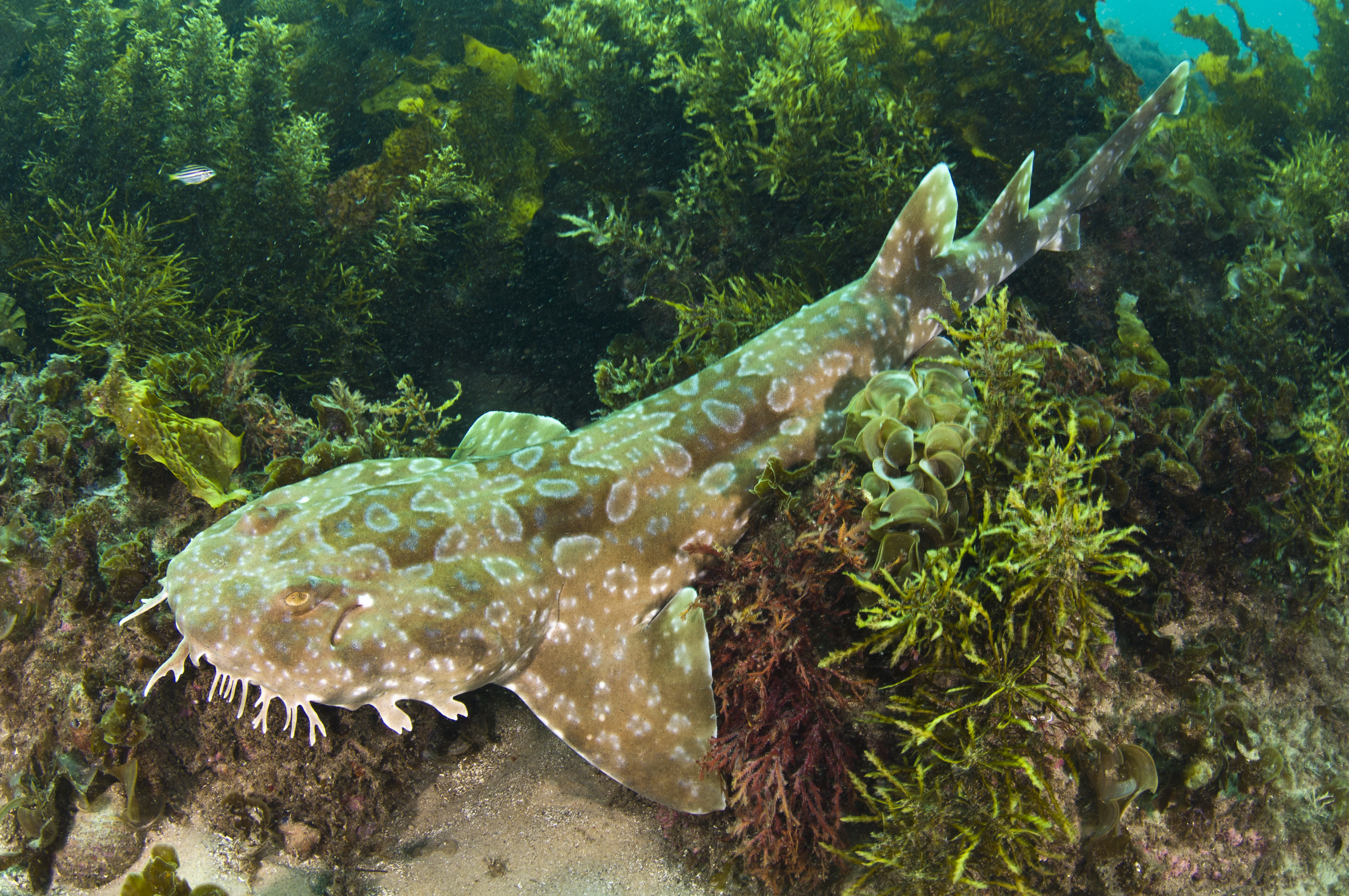
Gills.
Sharks get oxygen from the water through gills, as do other fish. But sharks have no gill cover. A gill cover is a bony plate that shields the gills of most fishes. Instead, sharks have five to seven slits in the skin on each side of the head. Water passes out of these slits after the shark’s gills take in oxygen and release carbon dioxide. Many sharks cannot pump water over their gills, as do most fishes. These sharks rely on their constant swimming to force water through their mouth and over their gills. This process of forcing water is known as ramjet ventilation.
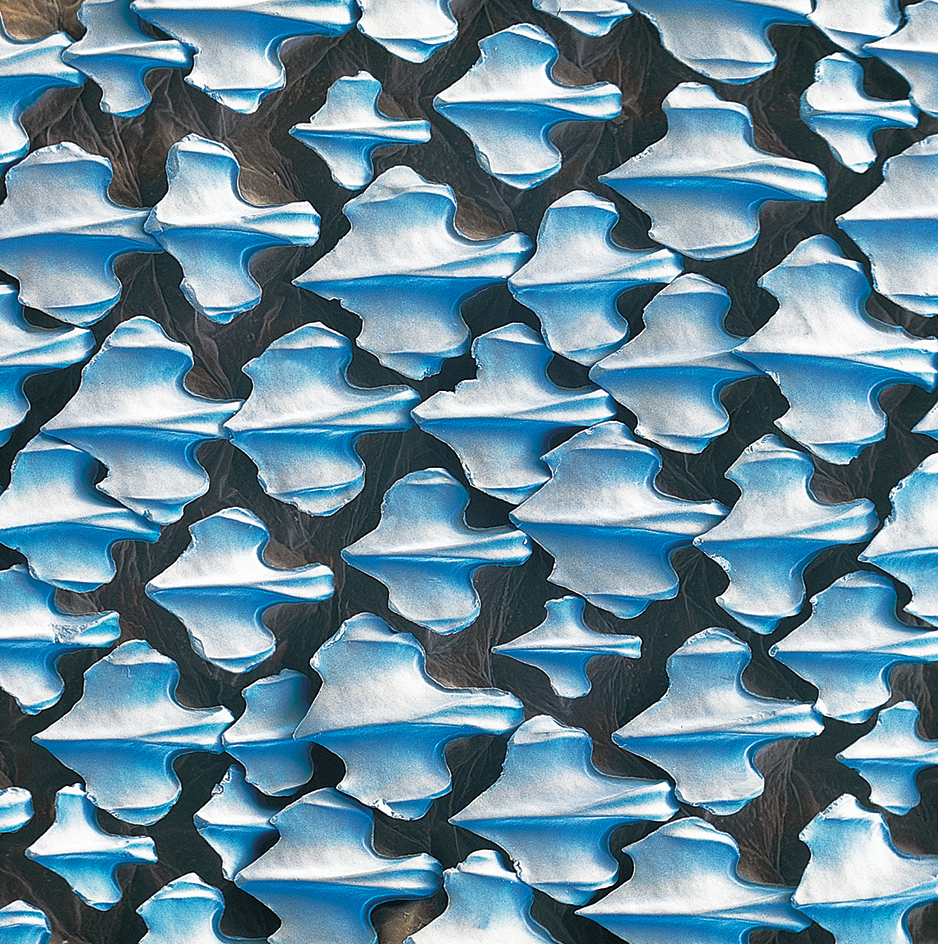
Senses.
A shark’s keen senses help it hunt prey. Sharks have excellent hearing, though it is limited to low-pitched sounds. Sharks can home in on prey by its sounds. The shark’s lateral line detects vibrations and movement in the water. The lateral line is a sensory system of fluid-filled canals that runs down both sides of the shark’s body, from its head to its tail. The lateral line is sometimes called distant touch.
Sharks have sensitive eyes that can see well in dim light. Some sharks may even have color vision. However, they may not be able to see details clearly. It was once believed that sharks relied mainly on their sense of smell to hunt prey. However, most species rely on all their senses to locate prey, find mates, and navigate the ocean.
Sharks can detect weak electrical fields. A shark’s head has small pores that lead to a system of sensory tubes. These tubes, called ampullae of Lorenzini, are sensitive to electrical fields. Sharks can locate and capture a fish by sensing the small electrical field produced by the fish’s body. Sharks also seem to use their electrical sense for navigation and migration.
Kinds of sharks
Sharks belong to a group of fishes known as elasmobranchs. Rays and skates also belong to this group. Scientists do not know exactly how many kinds of sharks there are. Biologists discover new species every year. Sometimes they find that two sharks that had been considered different species are actually the same. This section describes some of the best-known sharks.
Basking sharks
may measure over 30 feet (9.1 meters) long. They live in tropical and temperate waters. They eat only small water organisms called plankton. These sharks slowly swim at the surface when feeding. They seem to be basking (warming themselves). But they are actually filtering plankton from the surface. For more information, see Basking shark.
Bull sharks
can live in fresh water. They often enter rivers that empty into the sea. For example, bull sharks have been captured in the Amazon River in Brazil, in the Ganges River in India, and in the Mississippi River in the United States. They are also found in Lake Jamor in Indonesia and in Lake Nicaragua in Nicaragua. Bull sharks often feed on other sharks. They have on rare occasions bitten swimmers. For more information, see Bull shark.
Great white sharks
rank among the most dangerous sharks. They measure up to 21 feet (6.4 meters) long. They live in cool temperate to tropical waters. Great white sharks can migrate thousands of miles or kilometers each year and can jump more than 10 feet (3 meters) in the air. They prey on such large animals as sea lions, tuna, and other sharks. They have bitten human beings and even fishing boats. For more information, see Great white shark.
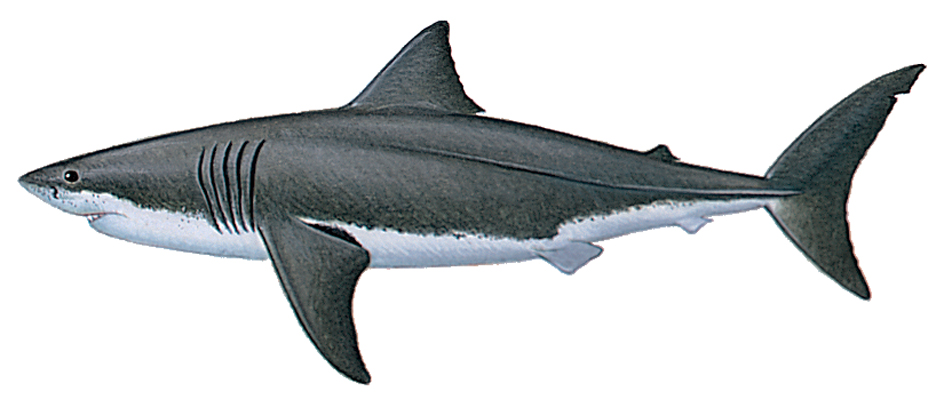
Hammerhead sharks
are among the strangest-looking sharks. They have a flattened head. The head of most hammerhead species resembles the head of a hammer. Their eyes and nostrils are at the ends of the “hammer.” Hammerhead sharks include a number of similar species. The largest hammerhead, the great hammerhead, may grow as long as 20 feet (6.1 meters). Hammerheads live in shallow tropical and warm temperate waters. They have on rare occasions bitten people. For more information, see Hammerhead shark.
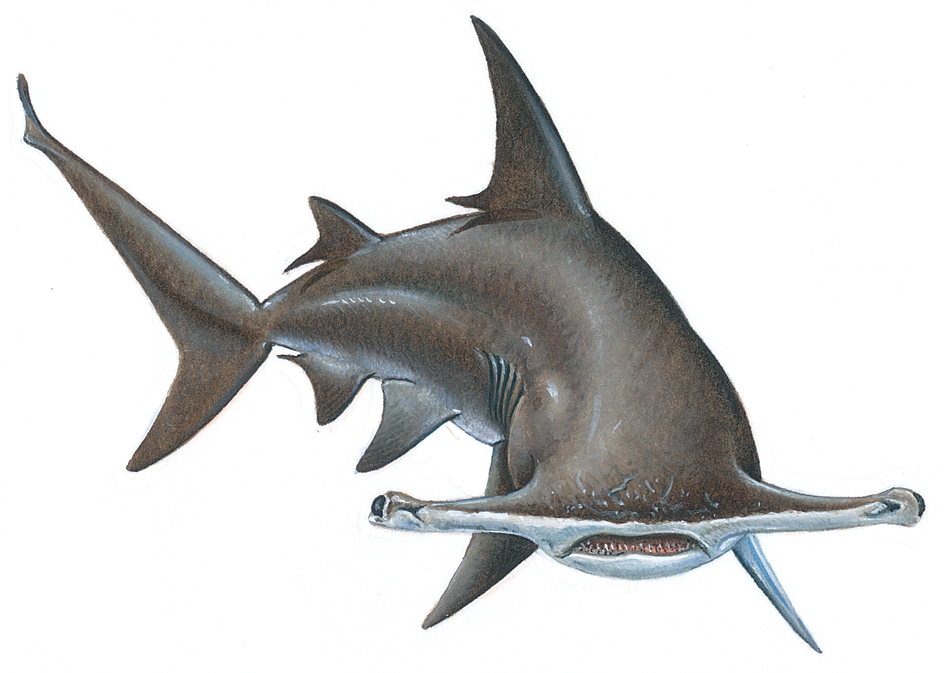
Mako sharks
are swift and powerful. Shortfin makos are considered one of the best species of game fish among all the sharks. When hooked, a shortfin mako fights by leaping high into the air. Most shortfin makos live in tropical and warm temperate waters. They may reach a length of 13 feet (4 meters). Makos feed on such fish as bluefish, sharks, squid, swordfish, and tuna. Mako sharks can be dangerous to people, but bites are rare. For more information, see Mako shark.
Nurse sharks
are slow-moving fish. They live among reefs in shallow tropical and subtropical waters. Unlike most species of sharks, the nurse shark can pump water over its gills. Therefore, it does not have to swim constantly and often lies motionless on the sea bottom. Nurse sharks may grow to 14 feet (4.3 meters) long. They eat bottom-dwelling fish, crabs, lobsters, and shrimp. They have bitten people, usually when provoked. For example, some people foolishly grab a motionless nurse shark by the tail. For more information, see Nurse shark.
Thresher sharks
are long-tailed subtropical fish that swim along the surface. They grow to a length of about 20 feet (6.1 meters). Half of that length is the tail. The thresher uses its long tail to”herd” the fish it feeds on and to stun fish before eating them. No thresher shark has been known to bite a person, but fishermen have been injured by the whipping tail. For more information, see Thresher shark.
Whale sharks,
in spite of their enormous size, eat only plankton and small fish. They are harmless to people. Whale sharks live in tropical waters. For more information, see Whale shark.
Sharks and people
Safety around sharks.
About 50 species of sharks are potentially dangerous to people. Most shark bites do not result in death or serious injury. However, swimmers should take care in areas known to have sharks.
People once thought that sharks ate constantly and would attack any human being immediately. But scientists have learned that some species of sharks can go for days or weeks without feeding. During this time, the oil stored in their liver probably nourishes them.
Scientists do not know why sharks sometimes bite people and at other times leave them alone. The American Elasmobranch Society studies shark bites throughout the world. The society supports safety advice for people who swim in water where sharks may be nearby. Experts recommend the following precautions for recreational swimming.
Never swim or dive alone. Avoid swimming when visibility is poor, such as at night or in dirty water. Also avoid swimming where people are fishing. Never swim or dive with an open wound. Blood may attract sharks. Also avoid wearing shiny jewelry while swimming. When light reflects off the jewelry, it can look like shiny fish scales to sharks.
If you see a shark while in the water, always keep it in view. Face the shark and maintain eye contact to let it know it is being watched. Surfers should point the bow of their board toward the shark. Never grab or injure any shark, even a small and apparently harmless one.
If a shark is acting erratically, slowly back away, keeping the shark in view. Leave the water as soon as possible.
When a shark does attack, hitting it hard on the nose can make it pause or retreat. Leave the water immediately. If a shark bites you, defend yourself aggressively. Try to scratch the shark in the eyes and gills. Do not “play dead.” Seek emergency medical attention.

How people use sharks.
Commercial fishing crews catch sharks mainly for their hides, fins, liver oil, and flesh. Shark hide makes a luxurious leather after the scales have been removed.
People in various parts of the world eat the flesh of many species of sharks. In England, for example, dogfish sharks are often used in preparing fish and chips, which consists of fried fish and French-fried potatoes. In China and other Asian countries, soup made from dried shark fin was long considered a sign of prosperity. Shark fin soup is still consumed, but it has become much less popular in recent years.
The liver oil of certain species of sharks contains large amounts of vitamin A. Until the late 1940’s, shark liver oil ranked as a main source of this vitamin. Then scientists discovered an inexpensive way to manufacture vitamin A. Some sharks have high levels of an oil called squalene, which is used in the making of some vaccines.
Commercial shark fishing increased during the 1980’s. One reason for the increase was that shark fins brought high prices in Asian markets. Fishing crews caught so many sharks that populations dwindled worldwide. Conservationists warned that many shark species would become extinct.
During the 1990’s, some countries began to protect sharks. South Africa, for example, declared great white sharks a protected species. South Africa banned fishing for these sharks or selling their jaws or other body parts. The United States issued rules in 1993 to protect a number of shark species in U.S. waters.
In the 2000’s and 2010’s, several kinds of sharks became protected under the Convention on International Trade in Endangered Species of Wild Fauna and Flora (CITES). CITES is an international treaty that regulates commercial trade of wildlife. The sharks protected by CITES include basking sharks, great white sharks, mako sharks, whale sharks, and some kinds of hammerhead sharks.


